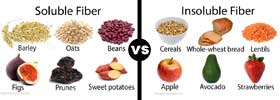Difference between And and Or
Key Difference: Both ‘and’ and ‘or’ are conjunctions and hence are often used in a similar context. ‘And’ is a type of coordinating conjunction and is commonly used to indicate a dependent relationship. Here, the two clauses are dependent on each other and both are true and take together. ‘Or’ is another type of coordinating conjunction, but it indicates an independent relationship. Here, the two clauses are somewhat separate; while they are related, they are not co-dependent on each other. In terms of Electronics, ‘and’ is used to indicate a function where both categories are met, whereas ‘or’ indicates a function where either categories are met.
 ‘And’ and ‘Or’ are two commonly used words in the English language, but it can be quite confusing to know which one to use where. Not only is this quite confusing for a student or a new learner of the language, but it can also be weird for a native speaker. It is even more confusing when logic gets involved, but first things first. What is the difference between ‘And’ and ‘Or’?
‘And’ and ‘Or’ are two commonly used words in the English language, but it can be quite confusing to know which one to use where. Not only is this quite confusing for a student or a new learner of the language, but it can also be weird for a native speaker. It is even more confusing when logic gets involved, but first things first. What is the difference between ‘And’ and ‘Or’?
As stated, both ‘and’ and ‘or’ are words in the English language. Both are conjunctions and hence are often used in a similar context, which is why many people think that they must be interchangeable. However, that is not the case. The usage of each word actually changes the meaning of the word.
Conjunctions are words that are used to connect words, clauses or sentences that are relevant to each other in the same context. Basically, conjunctions are used to indicate the relationship between two or more words, clauses or sentences. Hence, it can be said that both ‘and’ and ‘or’ are typically used to join two or more clauses while also indicating a relationship between them. However, it should be noted that while both ‘and’ and ‘or’ join two or more clauses together, the type of relationship they indicate is different.
‘And’ is a type of coordinating conjunction and is commonly used to indicate a dependent relationship. Here, the two clauses are dependent on each other and both are true and take together. For example: ‘I will bring the food and games.’ Here the speaker indicates that they will bring both the food and the games.
‘Or’ is another type of coordinating conjunction, but it indicates an independent relationship. Here, the two clauses are somewhat separate; while they are related, they are not co-dependent on each other. Each clause must be taken separately and only one can be true at one time. For example: ‘I will bring the food or games.’ Here the speaker indicates that they will bring either the food or the games. They will bring only one of the two things, not both.
If we take a look at the logic of the sentences, then
- In the case of ‘and’, the sentence can only be true if both clauses are true. Otherwise, the sentence is false. I.e. only if the speaker brings both food and games, will the sentence be considered true. If they only bring food, then the sentence is false, because the games are missing.
- In the case of ‘or’, the sentence is true when any one of the clauses is true. If both clauses are true, then the sentence is false. If neither clause is true, then the sentence is false. If they bring food, then the sentence is false, as they said that they will only bring one. Similarly, if they bring games, but not the food, then the sentence is true. But, if they bring both food and games, then the sentence is true because they were supposed to bring at least one. If they bring neither, then the sentence is false again, because they were supposed to bring at least one.
 In terms of Electronics, the terms take on a slightly similar but different function. Here, the meaning of the words remains the same, however, their function changes. Both ‘and’ and ‘or’ are used as operators to get a value. When ‘and’ is used it indicates a function where both categories are met. For example, The candidate is male and below the age of 35. Here, when the function is run, only the candidates that meet both the criteria, i.e. are male and are under the age of 35, will be selected.
In terms of Electronics, the terms take on a slightly similar but different function. Here, the meaning of the words remains the same, however, their function changes. Both ‘and’ and ‘or’ are used as operators to get a value. When ‘and’ is used it indicates a function where both categories are met. For example, The candidate is male and below the age of 35. Here, when the function is run, only the candidates that meet both the criteria, i.e. are male and are under the age of 35, will be selected.
In the case of ‘or,’ it indicates that either category can be met and it will still fulfill the function. Let’s take a look at the same example but with ‘or’: The candidate is male or below the age of 35. Here, the function will select all candidates that are male, even if they are over the age of 35 and all candidates that are under the age of 35, even if they are female. This greatly increases the candidate list as compared to when the ‘and’ operator is used. However, if the function required candidates in specific criteria, such as male and under the age of 35, then the ‘or’ operator would be useless and mess up the function.
Comparison between ‘And’ and ‘Or’:
|
|
And |
Or |
|
Definition (Oxford Dictionaries) |
Used to connect words of the same part of speech, clauses, or sentences, that are to be taken jointly. |
Used to link alternatives. |
|
Description |
Joins two words or phrases together. These words and phrases are to be taken together or neither. |
Joins two words or phrases together. These words and phrases are to be taken one or the other, but not together. |
|
Type |
Conjunction |
Conjunction |
|
Example |
She likes to sing and dance. She breathes and lives. Bread and butter. Tea and cookies. |
She sings or dances, but never together. She breathes or dies. A cup of tea or coffee. Cookies or biscuits |
|
Electronics (Oxford Dictionaries) |
A Boolean operator which gives the value one if and only if all the operands are one, and otherwise has a value of zero. |
A logical operation which gives the value one if at least one operand has the value one, and otherwise gives a value of zero. |
|
Description (Electronics) |
Where both categories must be met in order to get the value of one. |
Where either one of the categories must be met in order to get the value of one. |
|
Example |
The ball is red and white. |
The ball is red or white. |
|
Logic |
If ‘a = b and c’ , then
|
If ‘a = b or c’ , then
|
Reference: Oxford Dictionaries (And, Or), Grammarly, Math and Multimedia Image Courtesy: youtube.com, facebook.com









Add new comment